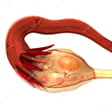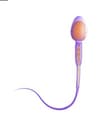Modes of Reproduction in Animals
Modes of Reproduction in Animals: Overview
In this topic, we will study the different modes of reproduction. It describes the asexual and sexual reproduction based on the involvement of parents. It also highlights the male reproductive and female reproductive system for better understanding.
Important Questions on Modes of Reproduction in Animals
Think what would happen if all the animals stopped giving birth to their babies.
Why do animals give birth to their babies?
Observe the following figures and write their functions.




Why do frogs croak in the rainy season?
How a seed is formed from a flower? Is it formed only from the ovary? Do the pollen grains play any role in the formation of seeds?
Do all young ones (offspring) resemble their parents?
What would happen if the fusion of sperm and ova does not take place?
What purpose does the tail of a sperm serve?
In Hydra, we see budding where new individuals develop from the buds. This type of asexual reproduction is called “Budding”
Does gametes and zygote form in this type of reproduction, why?
Do animals that have epidermal hair give birth to young ones or lay eggs?
Is epidermal hair seen in those animals whose ears are visible outside?
How do animals hear without external ears?
Are there any patterns in nature that give clues to modes of reproduction?
Who am I?
I am a fully developed embryo inside a mother’s body.
Who am I?
I am a gamete that has a tail and travel to fuse with female gamete.
Who am I?
I am formed by the fusion of male and female gametes.
Budding, binary fission are _____ (sexual/ asexual/ vegetative) reproductive methods.
Tadpole is the primary stage of _____.
Ovum is released from _____. (ovary/testes)
In humans, the foetus develops in _____. (oviduct/ placenta/ uterus)
